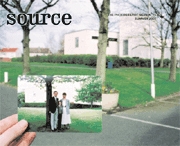An Antidote to Art
Richard West speaks to Timothy Prus, Curator of The Archive of Modern Conflict
Issue 43 Summer 2005
View Contents ▸
View film about: The Archive of Modern Conflict ▸
Richard West: Was there a point at which you consciously started collecting vernacular photography?
Timothy Prus: Pretty much at the very beginning of the 90s although I'd always been interested in finding quirky photos in flea markets and sticking them in the bottom drawer like I guess a lot of people have been.
Richard West: Were you a collector?
Timothy Prus: I'd been doing art dealing mainly in the 80s and was heartily sick of it. I found great pleasure in photography. That's how it grew. A Canadian colleague has been very supportive and constructive in bringing it all together but lots of people have helped in different ways. It's very much not a one man thing.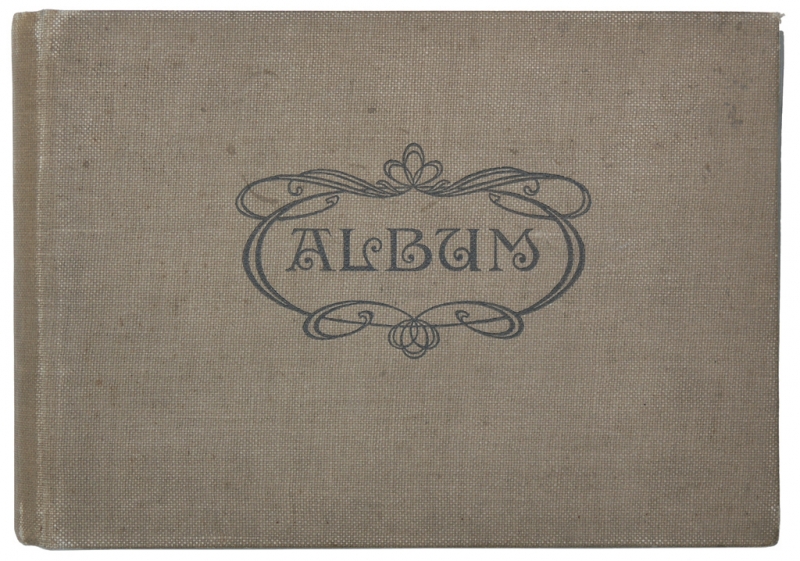
Richard West: Could you give a nuts and bolts description of what you've got in the collection?
Timothy Prus: There's more than a million images so it's tough to but there's a good deal of press photography, even more amateur photography, a large amount of 19th century by known and unknown photographers, some completely contemporary but not huge amounts, all periods are represented. Another characteristic is the amount of material from foreign countries, it's completely international. We particularly like albums because of the narrative structure, that helps in the story collecting, we love the captioning. At the same time we love individual images as well, it always seems there is room for both. We love negatives, big prints, small prints...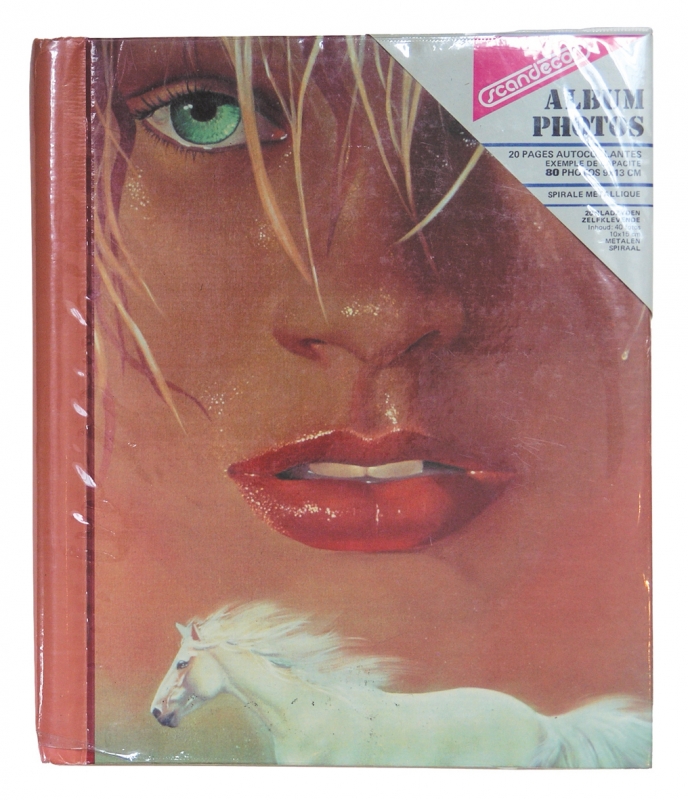
Richard West: Where do the pictures come from?
Timothy Prus: They come from the four corners of the world, sometimes people bring them, sometimes you find them in auctions, sometimes you find them on the internet, sometimes you find them in markets, sometimes you find them with photo dealers. It can be from anywhere.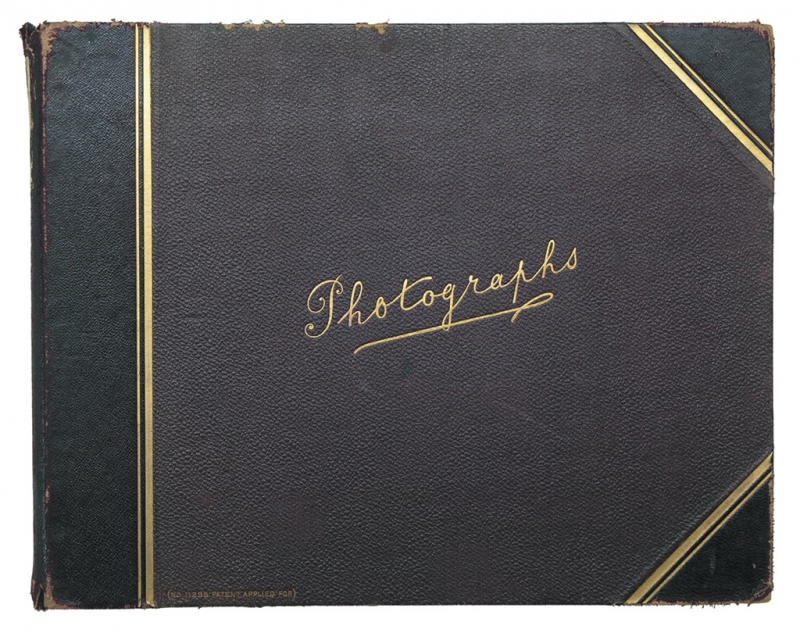
Richard West: It's called the Archive of Modern Conflict, what's the genesis of the name?
Timothy Prus: As an antidote to art I guess. I'm still very interested and committed to art as a thing but it needs a counterweight and quite often the counterweight to the creative drive is the destructive one, so we started on that basis. We started with World War II and we're still working on World War II.
Richard West: I remember when the Thomas Walther collection went to the Museum of Modern Art and was published, was that a seminal moment for anonymous pictures?
Timothy Prus: Not really. A very nicely done collection but I've got some reservations about completely decontextualising imagery like that. That's just a personal thing. I want to know the names of the people, I want to know where they were taken, I want to know why. The formal qualities of the pictures in that book are very good but for me it's not quite enough. But a fantastic book and there's been a flood of other ones since. It's interesting to look at the 1970s books on snapshots, there were lots of people collecting them then as well.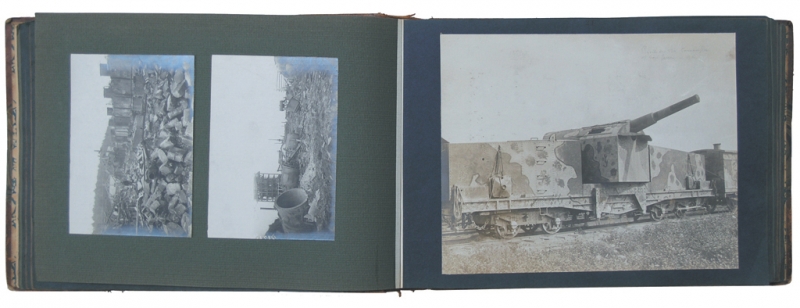 French album of photographs from the First World War.
French album of photographs from the First World War.
Richard West: Was there a point at which people started to think there was a financial value to these things that they hadn't thought about before?
Timothy Prus: I don't think so. It depends on the context. You sometimes see something exceptional that's vernacular for a few hundred dollars, or a thousand dollars, but that's still the exception. You can still go and buy masterpieces for ten dollars.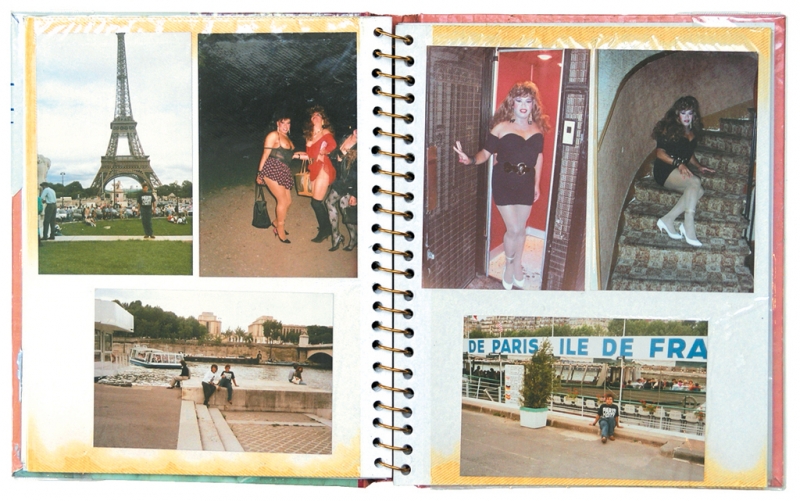 One of a series of albums of photographs assembled by Hubert Martinez of the Paris police made up of photographs confiscated from South American transvestites and photographs taken by the police.
One of a series of albums of photographs assembled by Hubert Martinez of the Paris police made up of photographs confiscated from South American transvestites and photographs taken by the police.
Richard West: Could you give a few examples of the channels that pictures come through before you find them?
Timothy Prus: People have photos and then there's some break in the narrative; they die, the next generation doesn't want them, people moving on get rid of pictures. Whether it's a family member getting rid of an album or a press archive depositing the lot into a skip in the street it's pretty much a sign of dynamic change. It drives me crazy and I just have to get in there.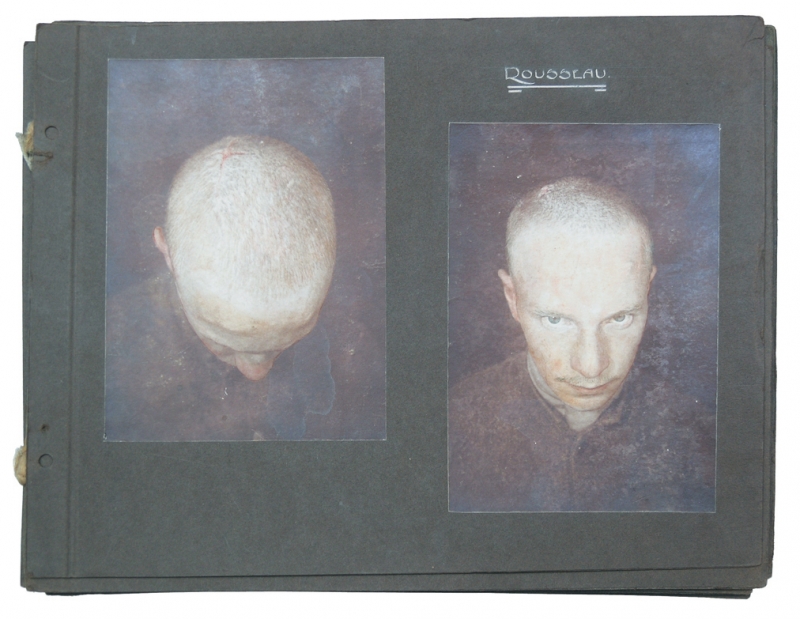 The first of a three part work produced during the first World War in
a French Hospital, L'Ambulance de l'Océan. The volume consists of photographs of head wounds and was produced under the direction of a Doctor Janssen. The hospital had a photographic studio but the names
of the photographers are unknown.
The first of a three part work produced during the first World War in
a French Hospital, L'Ambulance de l'Océan. The volume consists of photographs of head wounds and was produced under the direction of a Doctor Janssen. The hospital had a photographic studio but the names
of the photographers are unknown.
Richard West: In the skip?
Timothy Prus: Yes, very much so. People are always throwing photos away, you just have to look around and think what's interesting when you find them. For example an estate agent might close down and they might be throwing out all their 1980s interior shots; they've got no use for them. I might find that very interesting, I wouldn't know until I saw them. It's those sort of things; the world moving on.
Richard West: It makes me think of Susan Sontag's remark that there are probably more photographs in the world than bricks.
Timothy Prus: I didn't know that one, that's a very good one, I have played a game with someone before, estimating the tonnage of existing photos in the world. All the fun is in the editing. It's so rare to find someone who's edits look persuasive 50 years down the road when the world looks completely different. A lot of editing just looks terrible.
Richard West: That's true of an album, something that's already made, but would that work for the estate agent pictures?
Timothy Prus: If I found a file of a hundred 1980s estate agent pictures other criteria would come in to play to decide whether I took the whole file or just took two or three out, like what I knew of the context, like if I just found them scattered and had no idea where they came from. If most of them were boring I might just take the interesting ones. If you knew more about the context and it made sense then you'd be inclined to take the whole file.
Richard West: Do you think you could say what made those pictures interesting, the ones that you selected?
Timothy Prus: Could be any number of things. Generally it's just like a magic moment, you know it when you see it. It's very hard to properly articulate but if you get an emotional response like a feeling of melancholy or if it makes you laugh or any one of a number of feelings then it's probably nice to keep it.
Richard West: Could you give some examples of strengths in the collection where you've got lots of material that you think is very strong?
Timothy Prus: Very strong on the history of militarism, very strong on social and gender issues, so lots of women's albums, lots of material to do with poverty, lots of politically related material. Quite a lot of travel and anthropology. Some science, some technology. Little bit of fashion, general cultural history stuff is everywhere.
Richard West: How do you organise the collection?
Timothy Prus: The principle ordering is done with accession numbers and then descriptions are put into the computer so you use the keyword thing. The shelving is done principally though not exclusively by accession numbers. It would be impossible to do it any other way practically because so many items would cross over different categories you just wouldn't know where to put them. You'd put them in one place and their relevance to another section would get lost.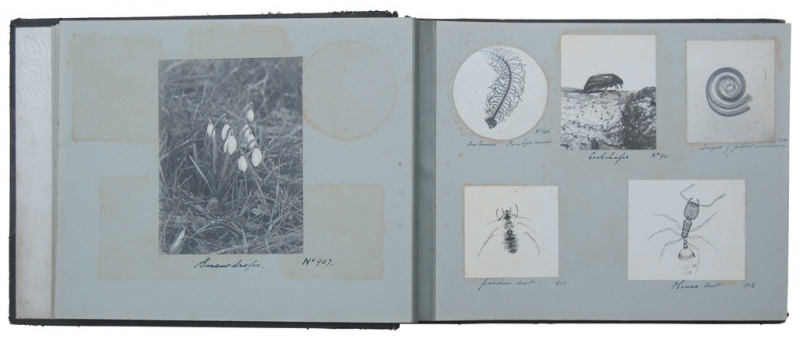 The first of four volumes produced by a vicar in East Anglia mostly
concerned with natural history. This volume dates from around 1910.
The first of four volumes produced by a vicar in East Anglia mostly
concerned with natural history. This volume dates from around 1910.
The trouble is, when they're in album form and you get, just a random example, you get an album put together by a soldier in the Boer war and there's good ethnographic content, there might be something to do with concentration camps for Boers, there might be some fantastic South African landscape, there might be some technological stuff to do with gunnery or trains. You don't want to split the album up so the only thing to do is to have an accession number and access through keywords which often doesn't work but it's the best you can do.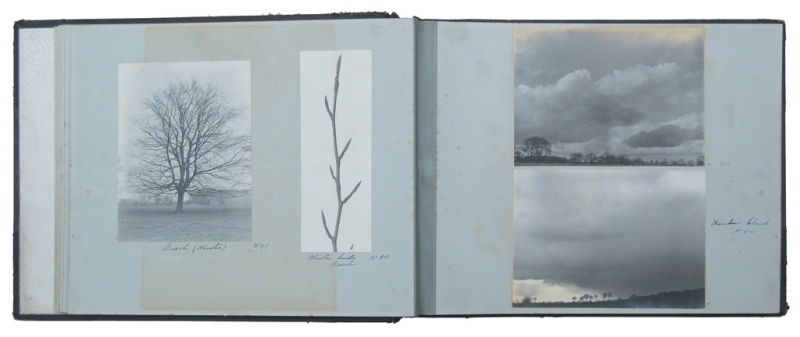 The first of four volumes produced by a vicar in East Anglia mostly
concerned with natural history. This volume dates from around 1910.
The first of four volumes produced by a vicar in East Anglia mostly
concerned with natural history. This volume dates from around 1910.
Richard West: Because the coherence of the album is more important than individual pictures does that say something about the function of the archive?
Timothy Prus: In the photographic album, the editorial process has gone on in each picture, someone's made the frame and then they've chosen what pictures to put in the album and quite often you get just single auteur albums, one guy, one set of photos, other times it's a mix of photos people have found with their own photos. I just think it's important to keep as much of the original context together as is humanly possible because otherwise people will forget and that's why history is all confused and why we have an infinite capacity for amnesia. I think also, if we were living in a strictly oral culture, that amnesia would not be working in the same way. I think there is some curious relationship between the way we forget and cultural change. Because we're living in a dynamic very fast moving society that amnesia is built in as a motor almost. We're not trying to freeze history here but it saddens me every day I'm encountering people splitting up albums because it's how some people make money, by taking the prize piece out and sorting like that.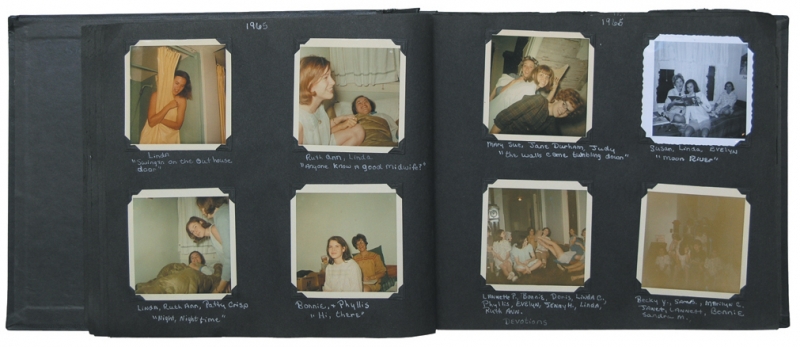 A Spread of pictures in a photographic album by Susan May called
'A record of my college daze' including pictures taken from 1965 to
1969 when she was a student at Georgetown University in Washington.
A Spread of pictures in a photographic album by Susan May called
'A record of my college daze' including pictures taken from 1965 to
1969 when she was a student at Georgetown University in Washington.
Richard West: Is it a kind of historical project then, the whole archive?
Timothy Prus: I would say it's a multidisciplinary project and history is part of it but I would hate it to be just the one thing. It's character is much more amorphous. All the disciplines have something interesting to offer.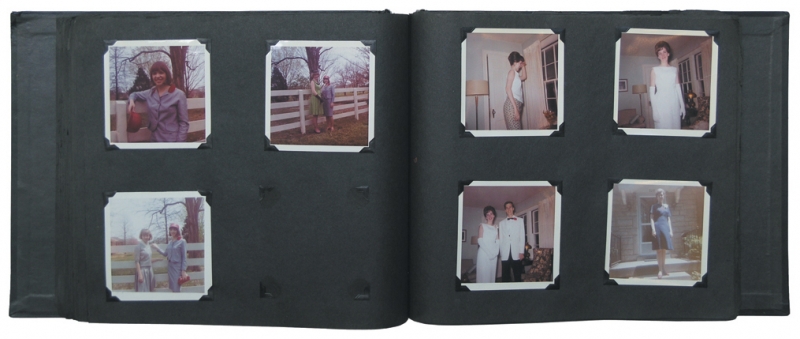 A Spread of pictures in a photographic album by Susan May called
'A record of my college daze' including pictures taken from 1965 to
1969 when she was a student at Georgetown University in Washington.
A Spread of pictures in a photographic album by Susan May called
'A record of my college daze' including pictures taken from 1965 to
1969 when she was a student at Georgetown University in Washington.
Richard West: I was struck that you defined the archive in contrast to art photography but when I asked you how you would choose the pictures from the estate agent most of the descriptions you gave were aesthetic ones, the mood of the pictures, the emotional response to them.
Timothy Prus: That's true but I did also say that there were a lot of other criteria going on so there would probably be historical criteria running alongside that kind of decision.
Richard West: What are most people's reasons for looking at the pictures in the archive?
Timothy Prus: A lot of single specific historical issues, different passions that people have. How we've made it work is that people who've got something to add or some passion that's relevant are welcomed with open arms but the truth of it is that most people who get in touch with us are just passing the time of day with idle concerns. So that's why at the moment we're not very inclined to have visitors because we just don't have the resources to let people browse. It would be nice but it's just not practical for us.
Richard West: So that touches on how the collection works as a publicly accessible archive...
Timothy Prus: Well it doesn't. In principle sections of it would be much better in the public domain but we're working through a lot of those issues all the time.
Richard West: How does it relate to museums, are there other collections that are equivalent?
Timothy Prus: I haven't really found one. There are lots of different archives out there and they all seem to have quite different motors. I always love looking at other people's archives, whatever type of institution it is, if it's a photo archive I'm interested.
Richard West: What's the motor for you?
Timothy Prus: We want to do more publishing, sometimes we lend images to people but the real thing is finding out more about the nature of the world, that's really the main thing, and finding those lost corners which are exciting. It can be anything, the other day a photo album turned up from a man making television sets in his front room in Rugby in the 1920s. Wonderful! Or a set of photographs of covered bridges in Vermont.
Richard West: Would you make a claim for the contents of the collection as representing the 20th century as against press archives like Hulton Getty?
Timothy Prus: Every archive tells a slightly different story and they all have a place but I would say that the pattern of the 19th and 20th century that emerges here looks different to Hulton Getty. In Hulton Getty you'll find more of the history in photojournalism. Here you'll find that as well but you'll find quirky private stories to do with subjects that no working press archive like that would have the room for because they'd be completely unsaleable.
I was just looking at part of a press archive that was put together after the anschluss in Austria and that showed something I'd never seen before, Nazis on merry-go-rounds. Another thing in recently that was very curious to me was one of those early 20th century albums put together by a vicar in East Anglia but with the idea that nature is somehow unified, putting pictures of clouds next to trees and frogs and animals to try and find some formal equivalence. We just got a lovely one on bridge building in Moldavia in the 1870s, that was nice and unlikely.
It's funny though, what's unsaleable one year is curiously exotic the next. Last year we helped on an article to do with 1970s private jet interiors. They'd been thrown away because two or three years ago they looked extremely dull. I guess everyone a long time back reacted against a history based around famous people and grand events. In some ways we're still on that trajectory, looking at smaller and smaller and odder and odder events. I guess another motor of the way we do things here is how strange the world is as well. We're always looking for something more strange than we've seen before.
Other articles by Richard West:
Source Photo: Do we need Photography Galleries? [Blog Post] ▸
Source Photo: The New Photo Galleries: A US Perspective [Blog Post] ▸
Source Photo: List Mania: 2011 Photobook Roundup [Blog Post] ▸
Source Photo: Is There a Crisis in Art Book Publishing? [Blog Post] ▸
Source Photo: Charlotte Cotton Resigns Media Museum [Blog Post] ▸
Issue 52: Teenage Girls at the Edges of Cities at Night... [Feature] ▸





